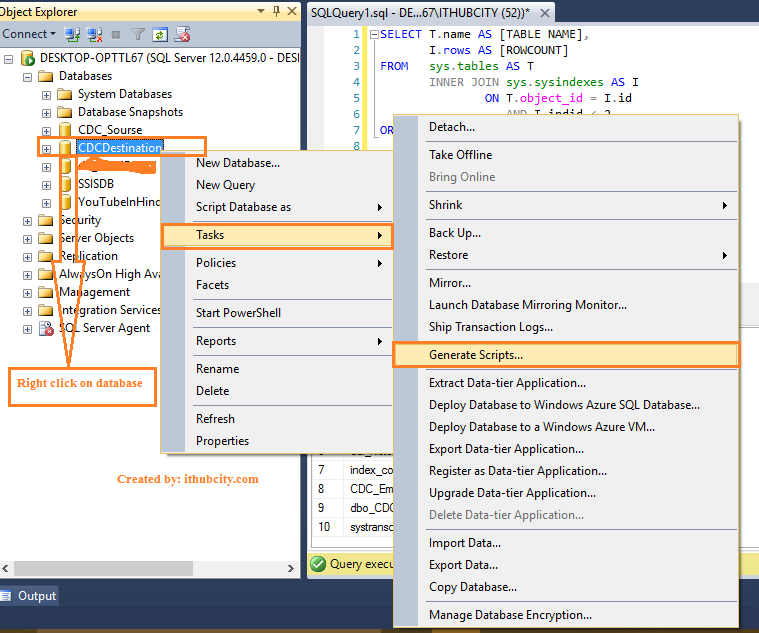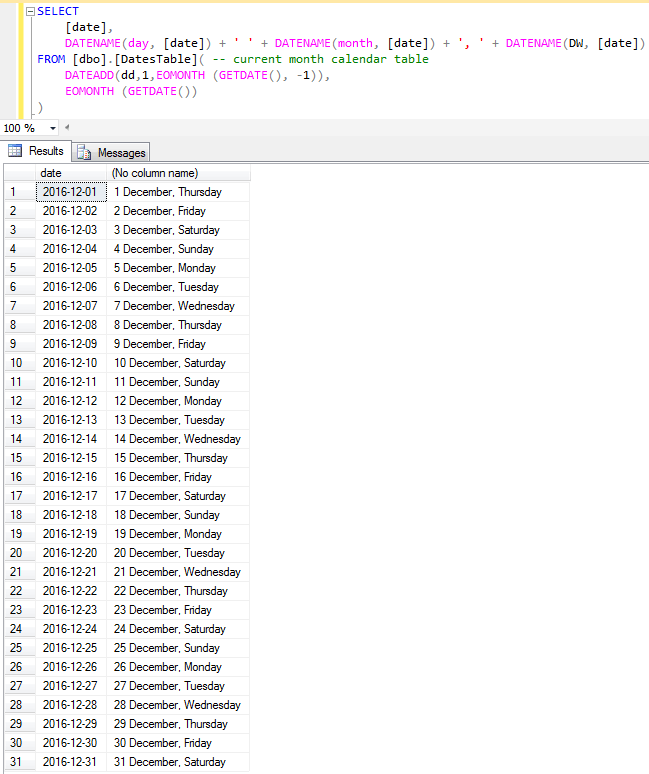How To Generate One Year Data In Sql
How To Generate One Year Data In Sql - That works except the now() function in sql server. The correct one is getdate(). Mysql comes with the following data types for storing a date or a date/time value in the database: Since you are on sql 2008 (or even 2005) you could use a single statement using the output clause as shown in the example below. Select id from table as t where not exists ( select 1 from table as t1 where t1.id = t.id and year(t1.enddate) = 2020 ); Get me records for last 7 year using the created. Sql server 2022 introduced the generate_series() function, which enables us to create a series of values within a given range.
Mysql comes with the following data types for storing a date or a date/time value in the database: Since you are on sql 2008 (or even 2005) you could use a single statement using the output clause as shown in the example below. That works except the now() function in sql server. Get me records for last 7 year using the created. Sql server 2022 introduced the generate_series() function, which enables us to create a series of values within a given range. The correct one is getdate(). Select id from table as t where not exists ( select 1 from table as t1 where t1.id = t.id and year(t1.enddate) = 2020 );
That works except the now() function in sql server. Get me records for last 7 year using the created. Since you are on sql 2008 (or even 2005) you could use a single statement using the output clause as shown in the example below. Mysql comes with the following data types for storing a date or a date/time value in the database: Select id from table as t where not exists ( select 1 from table as t1 where t1.id = t.id and year(t1.enddate) = 2020 ); The correct one is getdate(). Sql server 2022 introduced the generate_series() function, which enables us to create a series of values within a given range.
Generate SQL Script and Data for table in SQL Server
Select id from table as t where not exists ( select 1 from table as t1 where t1.id = t.id and year(t1.enddate) = 2020 ); The correct one is getdate(). Get me records for last 7 year using the created. That works except the now() function in sql server. Sql server 2022 introduced the generate_series() function, which enables us to.
How To Generate Test Data for Your Database With SQL Percona Community
Select id from table as t where not exists ( select 1 from table as t1 where t1.id = t.id and year(t1.enddate) = 2020 ); Sql server 2022 introduced the generate_series() function, which enables us to create a series of values within a given range. Since you are on sql 2008 (or even 2005) you could use a single statement.
SQL Date Format Easy Ways to Format SQL Dates
Since you are on sql 2008 (or even 2005) you could use a single statement using the output clause as shown in the example below. The correct one is getdate(). Get me records for last 7 year using the created. That works except the now() function in sql server. Select id from table as t where not exists ( select.
How To Create a Microsoft SQL Server Database Table Microsoft SQL
Since you are on sql 2008 (or even 2005) you could use a single statement using the output clause as shown in the example below. The correct one is getdate(). Mysql comes with the following data types for storing a date or a date/time value in the database: That works except the now() function in sql server. Get me records.
SQL Date Format Easy Ways to Format SQL Dates
Select id from table as t where not exists ( select 1 from table as t1 where t1.id = t.id and year(t1.enddate) = 2020 ); Get me records for last 7 year using the created. The correct one is getdate(). Sql server 2022 introduced the generate_series() function, which enables us to create a series of values within a given range..
How to Create a Date Table or a SQL Server Calendar Table using CTE T
The correct one is getdate(). That works except the now() function in sql server. Select id from table as t where not exists ( select 1 from table as t1 where t1.id = t.id and year(t1.enddate) = 2020 ); Get me records for last 7 year using the created. Mysql comes with the following data types for storing a date.
Learn SQL CREATE DATABASE & CREATE TABLE Operations
Get me records for last 7 year using the created. That works except the now() function in sql server. Sql server 2022 introduced the generate_series() function, which enables us to create a series of values within a given range. Select id from table as t where not exists ( select 1 from table as t1 where t1.id = t.id and.
SQL current date (and time, month, year, etc.) in postgreSQL
The correct one is getdate(). Get me records for last 7 year using the created. Sql server 2022 introduced the generate_series() function, which enables us to create a series of values within a given range. That works except the now() function in sql server. Select id from table as t where not exists ( select 1 from table as t1.
SQL YEAR Function
Sql server 2022 introduced the generate_series() function, which enables us to create a series of values within a given range. Mysql comes with the following data types for storing a date or a date/time value in the database: Select id from table as t where not exists ( select 1 from table as t1 where t1.id = t.id and year(t1.enddate).
SQL Tutorial 1 Create Database & Table, Data Input with Insert, First
Since you are on sql 2008 (or even 2005) you could use a single statement using the output clause as shown in the example below. Mysql comes with the following data types for storing a date or a date/time value in the database: Get me records for last 7 year using the created. Sql server 2022 introduced the generate_series() function,.
Select Id From Table As T Where Not Exists ( Select 1 From Table As T1 Where T1.Id = T.id And Year(T1.Enddate) = 2020 );
That works except the now() function in sql server. The correct one is getdate(). Mysql comes with the following data types for storing a date or a date/time value in the database: Get me records for last 7 year using the created.
Sql Server 2022 Introduced The Generate_Series() Function, Which Enables Us To Create A Series Of Values Within A Given Range.
Since you are on sql 2008 (or even 2005) you could use a single statement using the output clause as shown in the example below.









